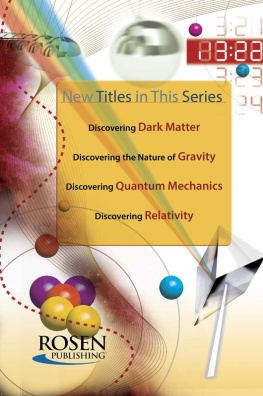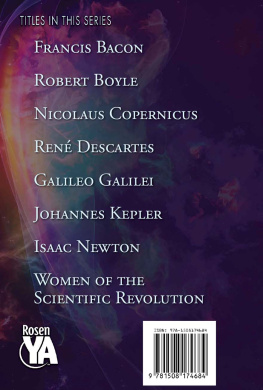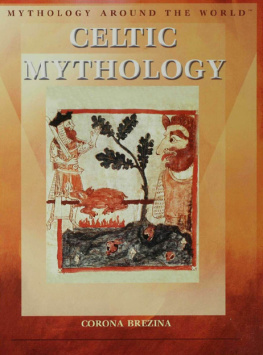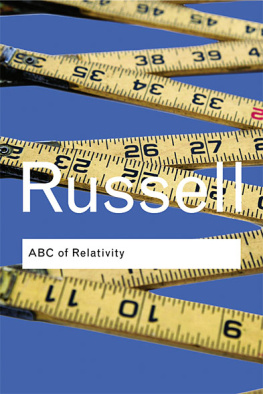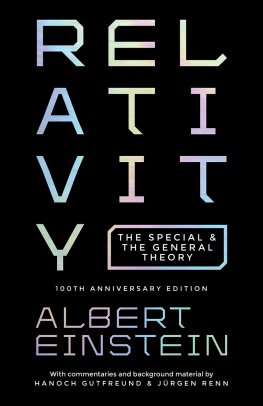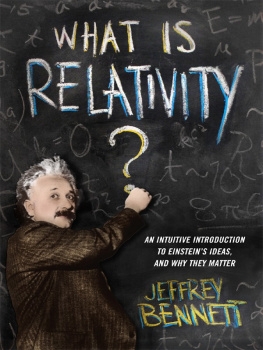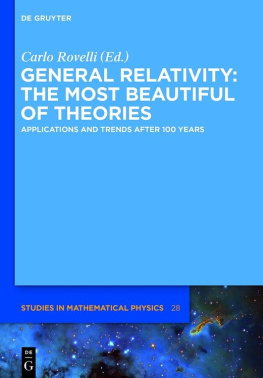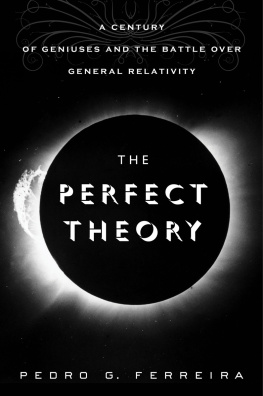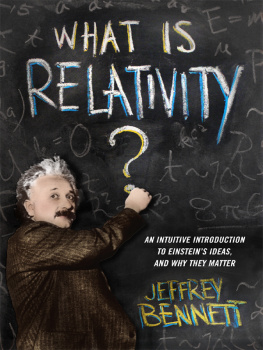Page List
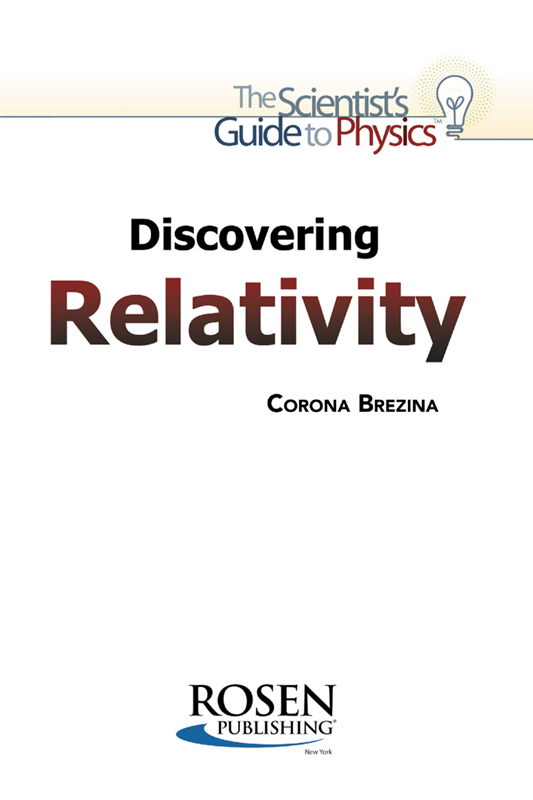
Published in 2015 by The Rosen Publishing Group, Inc.
29 East 21st Street, New York, NY 10010
Copyright 2015 by The Rosen Publishing Group, Inc.
First Edition
All rights reserved. No part of this book may be reproduced in any form without permission in writing from the publisher, except by a reviewer.
Library of Congress Cataloging-in-Publication Data
Brezina, Corona.
Discovering relativity/Corona Brezina.First edition.
pages cm.(The scientists guide to physics)
Includes bibliographical references and index.
ISBN 978-1-4777-8006-0 (library bound)
1. General relativity (Physics)Juvenile literature. I. Title.
QC173.6.B74 2015
530.11dc23
2014019697
Contents

INTRODUCTION
I n 1919, two teams of British astronomers traveled near the equator to observe a solar eclipse. Today, its easy to view their historic expedition as a scientific excursion of an earlier, slower age. The groups traveled across the Atlantic Ocean by ship. After they took photographs, they had to wait for months to see the results while the photographic plates were sent back to England and developed. But the scientists had a very modern purpose in mind. They hoped that their observations would serve as proof of Albert Einsteins general theory of relativity.
The result of their work was a photo showing a slight shift in a group of stars relative to their position in another photo. But the slight bending of light ushered in a new way of understanding the universe. The photos demonstrated that the suns gravitational field curved the fabric of space-time. It was confirmation of the validity of Einsteins general theory of relativity, his greatest achievement and, today, one of the landmark theories of science. In Andrew Robinsons book Einstein: A Hundred Years of Relativity, the renowned physicist Stephen Hawking states that the general theory of relativity spurred the greatest change in our perception of the universe in which we live since Euclid wrote his Elements of Geometry around 300 BC.
Einstein, then a professor of physics in Berlin, was already highly regarded by his scientific peers. The eclipse experiment brought international recognition to Einstein and his work. Newspapers around the world hailed relativity as a revolution in science. Einstein himself became instantly famous.
The popularity of Einstein and relativity, however, did not mean that the general public understood his work. Following the successful observation of the eclipse, the expeditions leader, Arthur Eddington, was honored at the official announcement. A colleague complimented Eddington on his accomplishment, commenting that he was probably one of only three men in the world who understood Einsteins theory. Eddington remained silent, and the colleague urged him not to be modest. Eddington replied that on the contrary, he was trying to think of who the third might be.

An April 27, 1919, photograph taken in Brazil shows the instruments Eddingtons expedition used to observe the solar eclipse. Movable mirrors directed images of the sun into two horizontal telescopes.
Einsteins general theory of relativity, published in 1915, was the product of more than a decade of work on relativity. He had begun by considering a limited approach to the subject, which is now called special relativity. Einsteins special theory of relativity, however, also made mind-boggling revisions to the laws of physics. Time and space were not absolute. Time and space were relative. In an afterthought to the theory, Einstein stated that matter and energy were interchangeable. Later, in his general theory of relativity, he described how gravitational fields affect the curvature of space-time.
Today, Einstein is still recognized as the personification of eccentric genius. His theory of relativity also endures as a framework for understanding how the universe works. General relativity predicted the existence of black holes when even Einstein refused to believe in their reality. General relativity remains valid in a universe in which objects are moving apart at an accelerating rate, a phenomenon that even Einstein never predicted. A hundred years after Einstein published his general theory of relativity, it still underpins new breakthroughs occurring in science.

A lbert Einstein was born during an era in which scientists understanding of physics was undergoing an unprecedented transformation. At the cusp of the twentieth century, astronomers did not know of the existence of galaxies other than the Milky Way. Physicists were not convinced that matter was made up of atoms. Scientists believed that space was infused by a mysterious material called ether. By the time of Einsteins death in 1955, scientists had shown that humans live in an expanding universe made up of many galaxies. The world had seen the creation of the atomic bomb.
Late in his life, Einstein wrote about how he developed suspicion against every kind of authority as a child, as quoted in Robinsons Einstein: A Hundred Years of Relativity. He described his sceptical attitude towards the convictions which were alive in any specific social environmentan attitude which has never again left me. Einsteins cynical outlook led to groundbreaking new ideas across the field of physics, the best known being his theories of relativity that reshaped the framework of physics and changed the way scientists study the universe. Einstein achieved his unprecedented scientific breakthroughs through independent thinking and a willingness to challenge conventional wisdom, even when conventional wisdom consisted of revered scientific principles that had remained unchallenged for centuries.
CLASSICAL PHYSICS
The concept of relativity is strongly associated with Einstein, yet the idea did not originate with him. Relativity of motion was first described by Galileo Galilei in 1632. Best remembered today for his work in astronomy, Galileo is sometimes referred to as the father of modern science.
Galileo described relativity using the example of a ship traveling in a straight line at a constant speed. Although the ship and its contents are in motion, the ships motion does not affect the motions of objects on the ship. Imagine tossing a ball, pouring water, jumping up and down, or conducting a physics experiment relating to motion. The laws of motion yield the same results whether the ship itself is in motion or at rest. That is because the contents are moving at the same rate as the ship.

Galileo is credited with developing the modern scientific method. He held that physics should be studied through experimentation and mathematical description.

